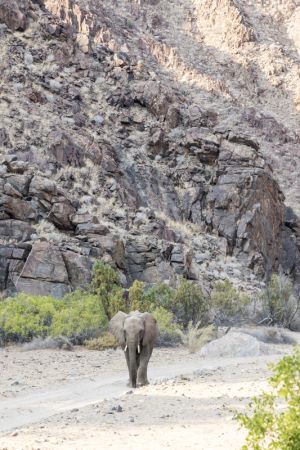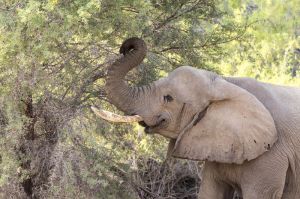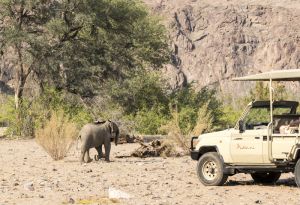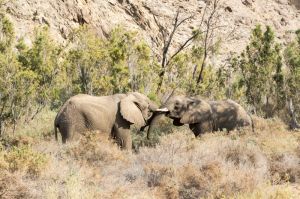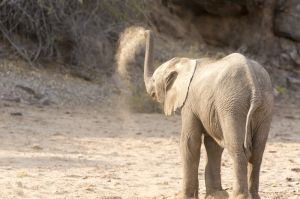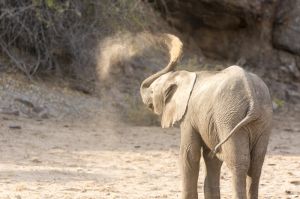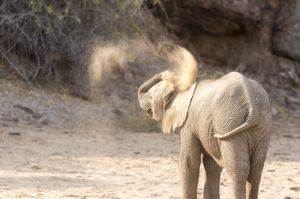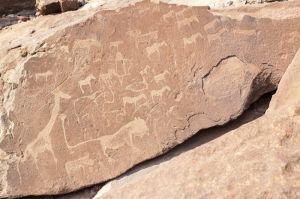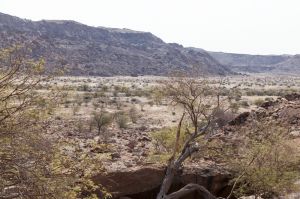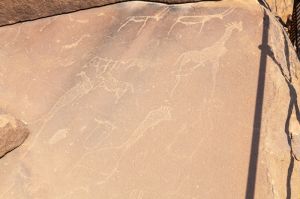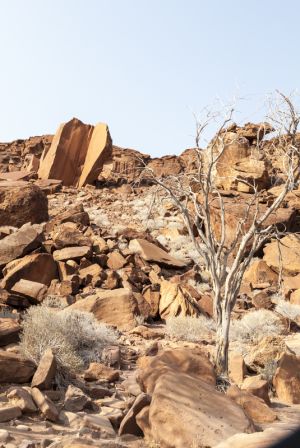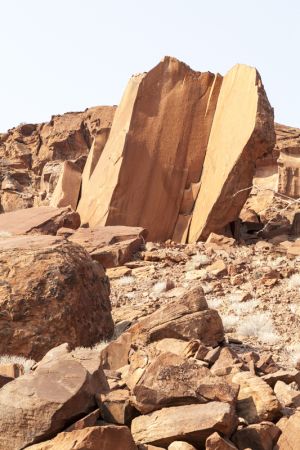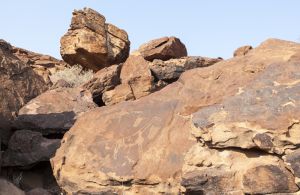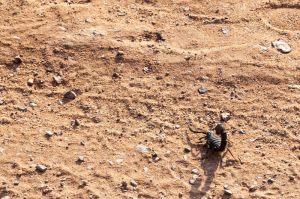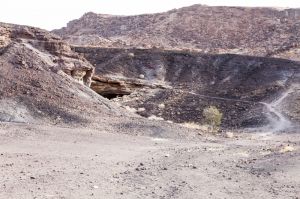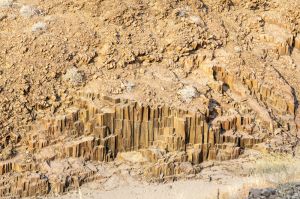Damaraland has surprising patches of green, associated with natural springs. The desert-adapted elephants are smaller than the elephants of Etosha and elsewhere in Africa, but are not a sub-species – they have simply adapted to the constraints of their environment. The elephants are well-aware of these springs, and we easily find a herd of the desert-adapted elephants feeding on the trees and bushes alongside the small natural stream. One of the elephants has a 9 month old calf, which is busy coating itself with the red dusty sand to offset the heat of the sun.
The little calf later demonstrates how to apply sunscreen, elephant style.
In the afternoon, it is a visit to Twyfelfontain, and the petroglyphs. Thankfully it seems to be cooler than yesterday’s 37 degrees Celsius.
But still hot enough for the black scorpions to be out and about…
A detour on the way back to Mowani to see the Burnt Mountain really isn’t worth it unless you can catch it in the morning light, and the Organ Pipes are a small geological formation along a dry river bed…again, not worth the entrance fee.
I’ve enjoyed the stay at Mowani – it has been the necessary antidote to Ongava, but be aware that Mowani like to fit 9 people into 9 seater vehicles, which is too cosy for me in any kind of weather, let alone 37 degree heat. It should be cooler again at the coast in the town of Swakopmund, which is where I’m heading tomorrow.

